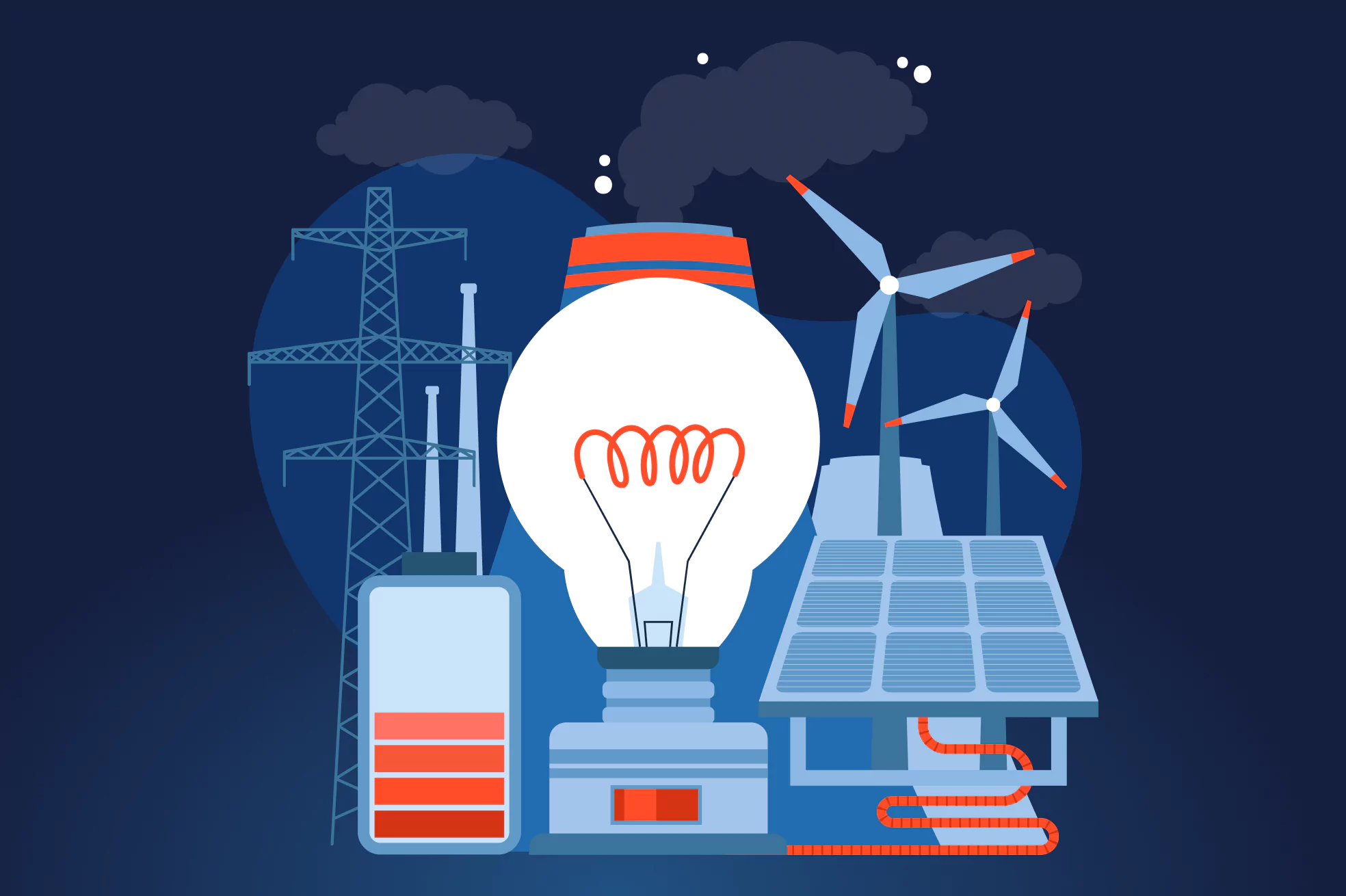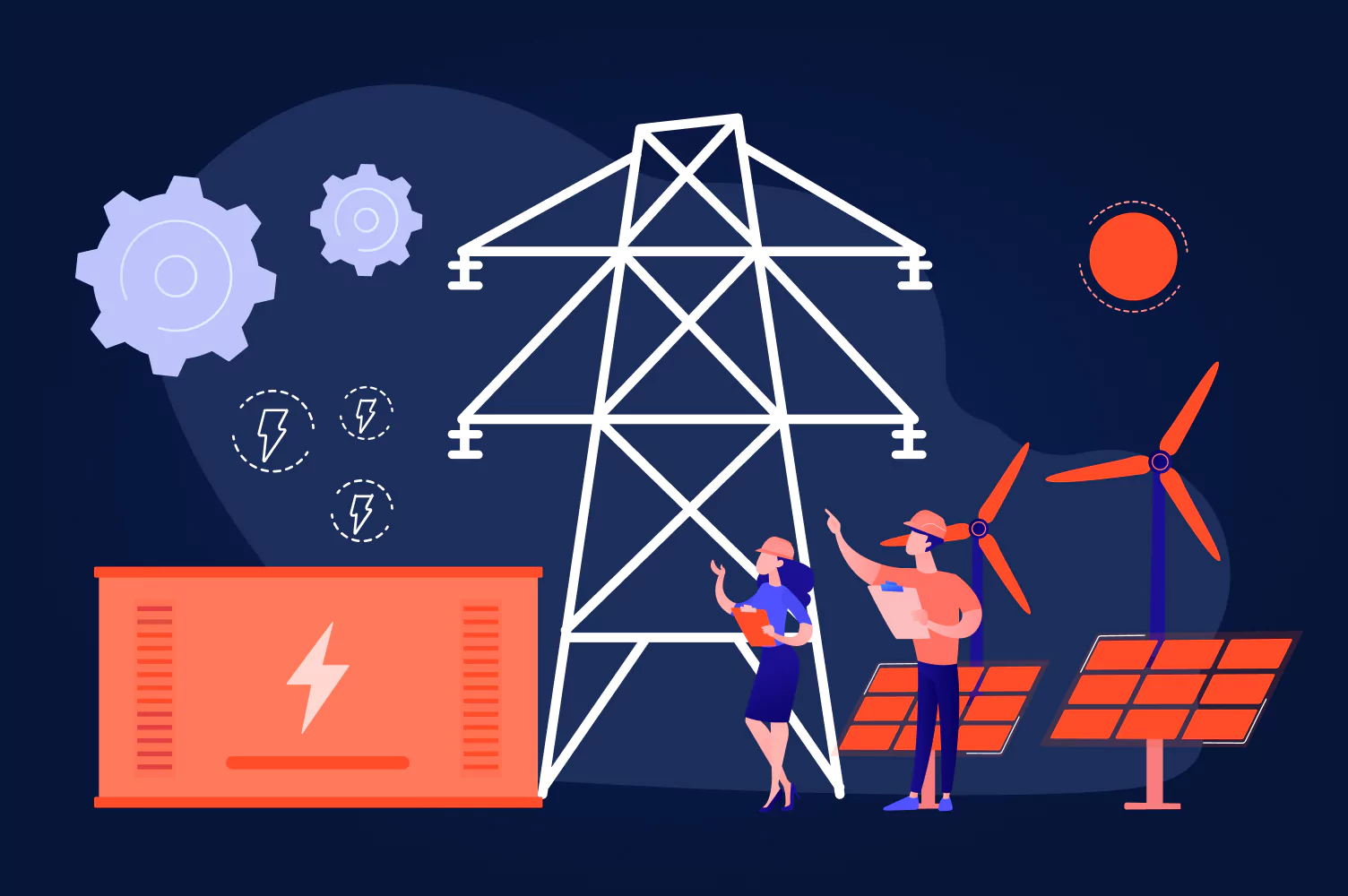Have you ever seen the movie called The Boy Who Harnessed the Wind on Netflix? Even if you’ve heard nothing about this film, you know exactly what it’s about – it’s right there in the title. A 13-year-old William saves his village from drought by creating a prototype of a windmill to power a water pump. The moral of the story is that today you can generate electricity without thousands of dollars in your pocket.
As the costs of renewables go down, the adoption of clean tech is revolutionizing the entire sector, making oil and gas companies adjust to new circumstances. Even though the world is inevitably heading towards clean technologies in the energy sector, don’t rush to say that oil and gas companies are doomed to die in a couple of years. Based on our experience in software development, the JatApp team will share with you some strategies to help you stay ahead of the competition in times of digital disruption.
Why will the energy industry move away from oil, gas, and coal?
Today, we can witness a significant decrease in the demand for fossil fuels, while the demand for renewable energy is steadily going up. The rise of electric vehicles (EVs) along with digitalization of the entire industry have also made renewables more widely available.
Distribution of renewable energy in the United States
Distribution of coal in the United States
Declining costs of renewable energy
The declining costs of renewables have come as a serious shock to the power industry. The changes in price are most evident in the European Union, North America, and Australia. Solar energy has become as cheap as coal in Australia, Spain, the United States, Italy, and Germany. Moreover, it’s already cheaper than coal in China.
At the same time, energy consumers are expected to lose their taste for fossil fuels in the next thirty years. More specifically, the demand for gas, oil, and coal will reach the point of zero by the end of 2050, replaced by hydrogen and renewable energy.
The rise of EVs
Energy storage is another important shift that has completely changed the game for the power industry players. EV sales are dramatically increasing, influenced by governmental regulations and environmental policies, while the costs of energy storage technologies, like lithium-ion batteries, drop sharply.
A wide range of famous car manufacturers are striving to refocus their attention on EVs, the cost of which is approaching the cost of owning a conventional petrol car. BMW forecasts that 15-25% of its sales be electric cars by 2025, and Honda is planning to make 75% of its vehicles electric. Volvo has decided to become an all-electric brand by 2030.
As a result, many innovative solutions are being born to support the EV boom. Our client from Switzerland, for example, has also joined this movement by creating a solution for managing EV charging stations. The technology lets users track the stations’ performance in real time and enables them to implement different operations, such as software reboot, somewhere from the comfort of their couch. On top of that, users get daily reports to track electricity consumption, which allows them to lead a more sustainable lifestyle.
Functionality of the solution for managing EV charging station
Industry digitalization
As in many other industries, digitalization is one of the most disruptive forces in the energy sector. Smart meters, for instance, allow companies to better understand clients, which helps to align energy supplies with individual households. This technology creates a sort of a feedback system that assists in managing renewable power demand in an efficient way. Thanks to smart meters, users can no longer choose whether they want their clothes or dishes to look good when the guests arrive – they forget about the energy supply headache and dare to use both their washing machine and dishwasher simultaneously.
Such complex power systems are typically based on machine learning algorithms that help to understand when and where renewable energy will be needed. The blockchain technology can support a peer to peer energy trading, letting neighbors sell surplus of their power to one another by means of energy grid setups and further reducing the role of fossil fuels companies in the sector.
P2P energy trading model
How can gas and oil companies reform themselves?
By 2050 the energy industry will no longer be dominated by companies producing fossil fuels. So instead of closing their eyes to the new reality and resisting change, companies have to reinvent themselves and succeed under new conditions. They can go down the path of decarbonization without pains of transformation by embracing the roles of the decarbonization specialist, low-carbon solutions leader, or energy major.
The decarbonization specialist
The decarbonization specialists are those oil and gas businesses that can successfully implement low-carbon technologies. They introduce storage and utilization innovations as well as methane emissions-management solutions. These guys build a low-emissions operating model that their competitors can hardly replicate. The decarbonization specialist archetype refers to an organization that has profound operational abilities, possesses carbon-advantaged assets, and positions itself as a carbon management leader.
The low-carbon solutions leader
The low-carbon solutions leaders will be those companies that operate in one or more clean energy fields, like biofuels, offshore wind energy, or hydrogen. Notably, they don’t usually have any role in gas and oil production. These businesses opt for capitalizing on their core assets, using their capabilities and knowledge to compete in the new sectors across the clean energy industry. This archetype epitomizes the gradual shift from hydrocarbon exploration to an alternative energy sources portfolio.
The energy major
The energy major is the one who creates or adds clean energy companies to their current gas and oil assets. In other words, they will extend the scope of their operations to explore innovative approaches to energy production and management. Also, they will completely switch to low-carbon energy over time, taking advantage of new market opportunities.
Five things oil and gas companies can do to become more efficient
Oil and gas companies can benefit from different digital energy technologies, ranging from cloud computing to power management solutions, to make their businesses more competitive in the digital era.
Move to the cloud to obtain unified data
Connectivity plays an increasingly important role in provision of unified data. Leaders are turning their heads to cloud computing to support effective decision-making based on data from many fragmented sources. In fact, 96% of leaders are convinced that connectivity initiatives, like cloud computing, will help to increase employee engagement by approximately 20%. Another fascinating finding is that 100% of leaders believe that connectivity will increase their profits by 10% or more.
Use data management capabilities to improve decision-making
You cannot simply reinvent your business without effective data management. Successful oil and gas players use data management capabilities to boost analytics, which, in turn, helps to detect new business opportunities, streamline their existing portfolios, successfully cooperate internally, create innovative solutions with partners, control remote operations, and make use of the cloud.
Opt for an energy management solution
Modern businesses are dealing with the carbon challenge by raising awareness about the role of low-carbon solutions. The leaders anticipate their low-carbon areas of business to witness margin increase by 20%. For these companies, renewable energy and hydrogen present a glimpse of hope for the bright future.
For example, oil and gas companies can reinvent themselves by incorporating building energy management systems (BEMSs) that help to manage power consumption. One of our recent clients, a BEMS solution for commercial buildings, helps to cut down carbon emissions by 40%. The technology would allow oil and gas companies to manage heating, ventilation, and air conditioning (HVAC) power use without neglecting the occupants’ health and comfort.
The BEMS functionality
When the indoor conditions change, the solution adjusts HVAC to the new environment. This helps to make sure that, say, the air conditioner no longer keeps cooling the premises, when the occupants are covered with goosebumps, which, as you might guess, aren’t their reaction to the pleasure of working in that building.
Project artificial intelligence status of the BEMS
Build a connected supply network
Creating a new business segment or line of products may come with the need to build new supply networks. With the easy-to-use solution in place, oil and gas companies have a specific framework, within which they can create these partner networks around a new venture. When members of the network can communicate in real-time, they are able to exchange important data on logistics, equipment, and similar, as well as handle any blockers together.
Starting a new business segment can be quite risky and challenging for fossil fuels companies. Yet, alliances and partnerships with other companies help to mitigate that risk, while connected supply networks become a game-changer, assisting in cooperting and data sharing.
Focus on improving customer experience
As oil and gas companies have a transformative journey, they need to shift from being commodity organizations to client-focused businesses. Imagine you’re eating out in a restaurant. Probably, you expect not only to be fed properly but also get aesthetic satisfaction from the interior design, talk to a helpful waiter, or become excited when you see your meals arrive, as if you met the love of your life after many years apart.
Similarly, it’s no longer enough for power businesses to simply meet the energy demand. These days, oil and gas companies need to solve customers’ problems and pain points. For instance, they need to discover ways to make it convenient for them to log-in, make a purchase, and pay for services. Reinvention always starts with responding to clients’ preferences, and digital solutions for oil and gas companies can help to better understand a target audience, forecast trends, and ultimately meet customers’ needs.
User-friendly user authentication of the BEMS
Survive and prosper in the digital era with JatApp
Even though oil and gas companies aren’t going away anytime soon, they need to be ready to face the low-carbon future. Pivoting from fossil fuels to renewables isn’t the overnight revolution, but with the right technologies in place, even eye-popping targets set for energy companies seem pretty much feasible. To survive this transformation in the power and utilities sector, these businesses need to take one step at a time, gradually incorporating solutions that promote net-zero emissions and low-carbon power.
With JatApp, you can no longer worry that oil and gas companies would give themselves to the Dark Side. Our company can provide you with technical expertise in building software to facilitate energy digitalization. We pride ourselves on being one of top 1,000 outsourcing companies in the world and top-50 mid-market software agencies according to Crowd. And a five-star rating on Clutch shows that our clients agree that we’ve earned these awards.
Want to build a solution for the energy industry? Please, leave us a note and we’ll contact you in the shortest possible time.










